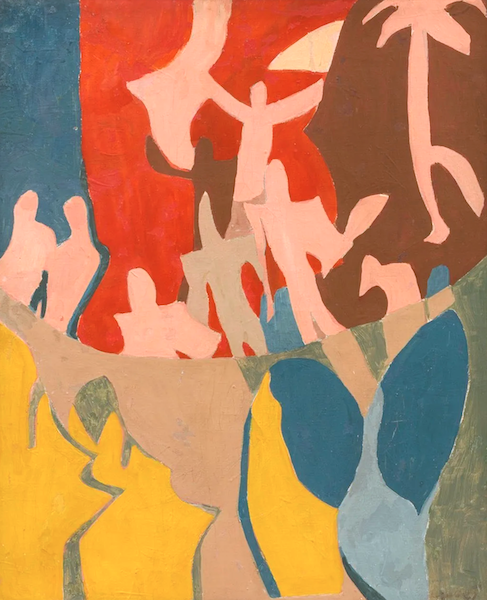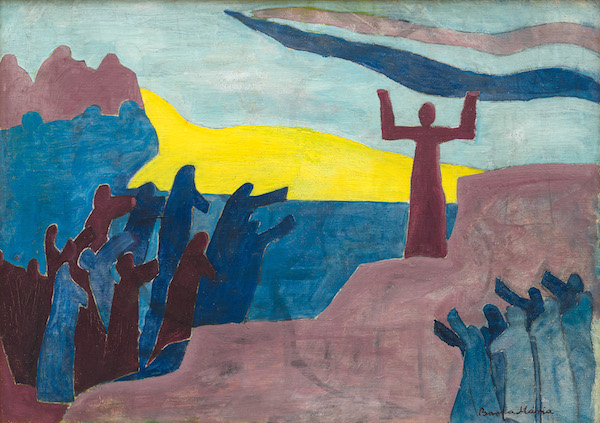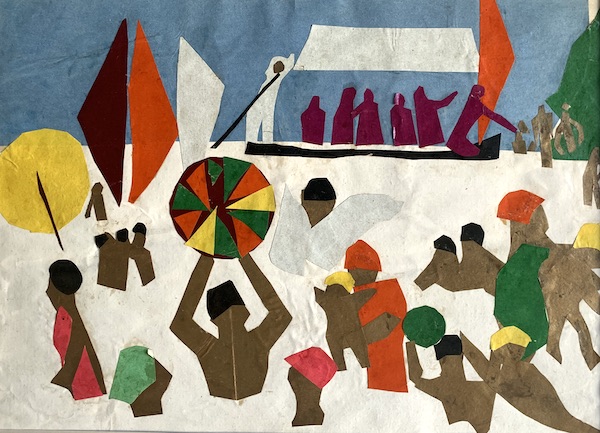Biography
Mária Barta began her studies at the School of Applied Arts in 1915 as a student of Géza Udvardy, Béla Iványi-Grünwald and József Rippl-Rónai. During these years of study, her style was characterized by an academic late Art Nouveau: Iványi-Grünwald was the most influential of her masters. She mainly made portraits, nudes, floral studies, set and costume designs, and, in connection with the customs of the age, studied folk costumes in Banat and the Highlands.
In the early 1920s, she traveled to Vienna, where she continued her studies at the School of Applied Arts in 1921 and became acquainted with the avant-garde artistic aspirations of the era, such as futurism and Franz Czizek’s Viennese kinetism. In Vienna, Czizek's pupil Erika Giovanna Klein may have been the painter partner of Barta. Barta also visited Kassák, who emigrated to Vienna. In the late twenties she moved to Paris, from where she often made study trips. In Italy, she visited the collection of museums, watercolor portraits and street paintings in Rome, Florence, Bologna and Sicily, but also toured Switzerland and Turkey. From these travels and Western inspirations, Barta developed a special formal language that was clearly linked to progressive trends in the twentieth century.
While very little of Barta’s work abroad in the early twenties has survived, her works from the 1930s are well known. These works are those that are unparalleled in their self-forgetfulness, playfulness, and visual and color solution in the years before the Hungarian war and with which they were presented to the Hungarian public for the first time. Although she exhibited at the National Salon in 1921, in 1933 her works were given a separate room in the collection exhibition. Upon her return, she took an active part in Hungarian painting life: she was a regular exhibitor at the National Salon, the Ernst Museum, the KÚT, the Munkácsy Guild and the Balaton Painters' Association.
Mária Barta replaced the late Art Nouveau, decorative, naturalist style of her student years with reduced, stylized pictorial wording in the 1930s. Her paintings reflect the influence of the École de Paris, Matisse and fauve, which she combined with the style of art deco.
Her post-Impressionist era began in the mid-to-late 1930s, with interior and still life as its main themes. In the forties she attended the classes of Aurél Bernáth at the free school on Alkotmány Street. Her paintings became softer, more atmospheric, but she still made vibrant, apt drawings, non-figurative workshops that were characterized as fresh even in the sixties. She participated in the group exhibition of the Old Art Gallery in 1945 and 1946, and in 1947 she organized a joint exhibition with György Román. In 1959 she exhibited with himself at the Ernst Museum.




